Bringing some green into our homes can be a great way to add life and color to an indoor environment.
Choosing easy house plants for your home is a great way to start. House plants not only look beautiful but also purify the air by removing harmful toxins.
Easy House Plants For Our Homes
Here are some of the best easy house plants that require minimal care and effort so you can enjoy their beauty without breaking a sweat.
Spider Plant (Chlorophytum Comosum)
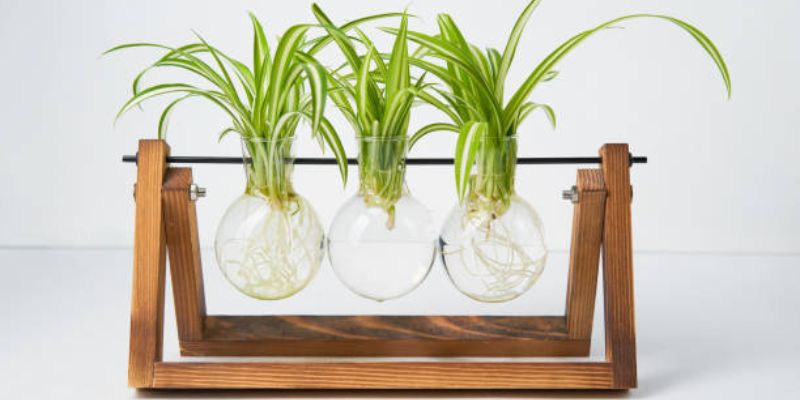
The Spider Plant is a popular choice for many reasons, but mainly because of their easy-care nature. Spider plants thrive in medium to low indirect light and enjoy high humidity levels, making them well-suited for bathrooms.
They are excellent at removing toxins from the air, such as formaldehyde and benzene. The spider plant also produces new shoots readily, which can be placed into separate containers or given away as gifts.
When re-potting this houseplant make sure you choose a pot with plenty of drainage holes to ensure proper drainage during watering.
Water when the soil is dry about 2 inches down and fertilizes every four weeks during spring and summer months for optimal growth. With its long wispy leaves, this houseplant adds a splash of energy to any home.
Snake Plant (Sansevieria Trifasciata)
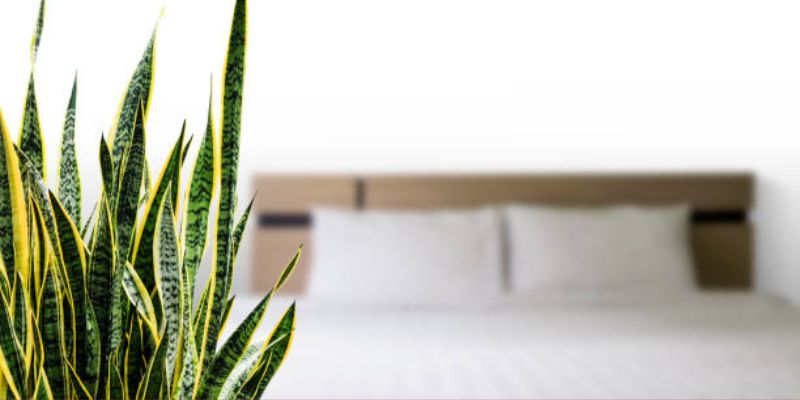
Snake Plant (Sansevieria trifasciata) is a low-maintenance, easy-care houseplant that is highly tolerant of long periods between watering with little to no consequences.
It’s also air purifying and considered one of the best plants for removing toxins from the air, such as formaldehyde and benzene.
The snake plant requires very little attention making it an excellent choice for beginner gardeners or busy homeowners who don’t have time to nurture a more finicky plant.
It can tolerate low light but grows best in bright indirect sunlight. When grown outdoors, it prefers warm temperatures but will survive indoors all year round without any special requirements.
Soil should be well draining and not too wet: use a regular cactus mix with added sand if your soil does not drain easily.
It is a slow-growing plant, rarely reaching more than two feet tall, with long and slender green leaves that often have a mottled yellow pattern.
Snake plants are mildly toxic to pets if ingested so should be kept away from furry friends. Overall, this hardy plant is an ideal addition to any home looking for low-maintenance greenery.
Pothos (Epipremnum Aureum)
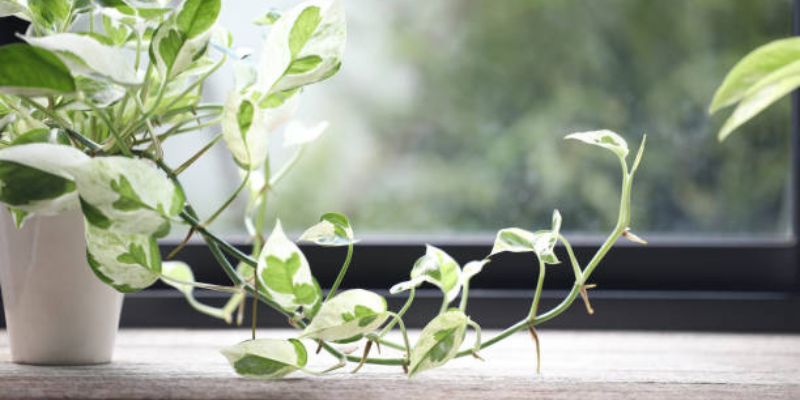
Pothos (Epipremnum aureum) is commonly known as the devil’s ivy, this easy-care houseplant is very tolerant of low-light environments and infrequent watering.
Not only does it help to purify the air of toxins such as formaldehyde and benzene, but its trailing foliage can add a splash of greenery to any space.
Pothos requires well-drained soil in order to thrive, so be sure not to keep them in consistently saturated or waterlogged soil. With proper care, these plants can reach up to 8 feet long.
Be sure to prune your pothos regularly to encourage growth and prevent it from becoming too leggy. These plants are also considered mildly toxic if ingested by humans or pets, so take caution when placing them within reach of children or animals.
Overall, pothos is an excellent choice for a low-maintenance houseplant that can add greenery and purify the air in your home. With proper care, this plant can thrive for many years.
ZZ Plant (Zamioculcas Zamiifolia)
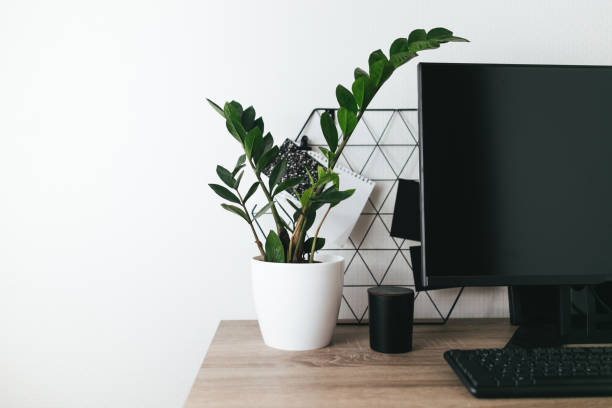
The ZZ plant is a unique and striking houseplant, with glossy dark green foliage that can reach up to 2 feet in height.
It is a low-maintenance and drought-tolerant choice for easy care. This tropical perennial prefers bright, indirect sunlight but doesn’t require much light to thrive.
Watering should be done when the soil dries out completely; however, the ZZ Plant has an unusually high tolerance for dryness, making it perfect for those who tend to forget about their plants.
With its slow-growing habit, this plant can easily be kept in one pot for years before needing repotting or division. Its leaves contain toxins that may cause skin irritation so special care should be taken while handling it.
This plant is ideal for those who want to add a bit of greenery to their home without having to manage difficult care requirements.
Overall, the ZZ Plant is an attractive choice for any home and makes a great addition to any low-light environment.
The slow-growing habit and ease of care make it an excellent option for beginners or forgetful gardeners. With its unique look and minimal upkeep requirements, this houseplant can bring life into almost any room in your home.
Philodendron (Philodendron Sp.)
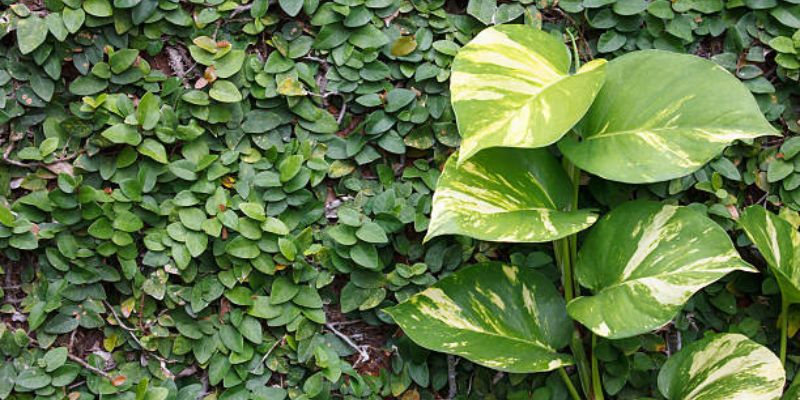
Philodendron is a great choice for the beginner houseplant grower. These lush foliage plants come in many different varieties and they are very easy to care for.
Philodendrons thrive best in bright, indirect light but can tolerate lower light levels as well. They prefer moist soil with good drainage but do not like soggy conditions.
They need regular watering but should be allowed to dry out between waterings. Fertilize your philodendron every two weeks during its growing season (spring through summer).
Pruning is only necessary if you want to encourage fuller growth or shape the plant. Be careful when handling philodendrons, as their sap can cause skin irritation or discomfort if it comes into contact with your skin.
With the right environment and care, philodendrons can be a beautiful addition to your home.
Chinese Money Plant (Pilea Peperomioides)
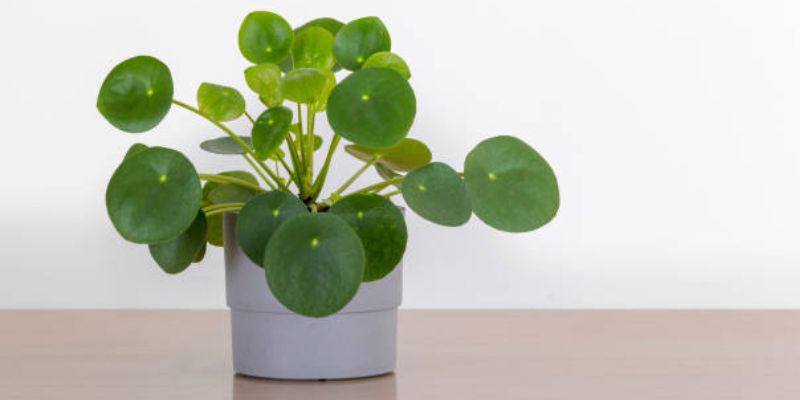
The Chinese Money Plant is an easy-to-care-for houseplant that also goes by the names of Pancake Plant, UFO Plant, and Lefse Plant.
It’s native to China and has recently become popular with plant enthusiasts all around the world. It grows best in bright indirect light and moist soil, with occasional misting for extra humidity.
The leaves are round and coin-shaped; hence its common name, Chinese Money Plant. This species can be propagated easily from cuttings so it can quickly fill up space if desired or shared with friends.
The ideal temperature range for this plant is between 55 F (13 C) to 85 F (30 C). Water your Chinese Money Plant when the top inch or so of soil is dry, and fertilize every couple of months to ensure it stays healthy.
Removing yellow leaves regularly can help prevent pests from infesting the plant. With just a bit of care and attention, you’ll be sure to enjoy this quirky houseplant for years!
Care And Maintenance
There are a few important care and maintenance tips to keep in mind when caring for these easy-to-care houseplants.
Light Requirements
Most of these easy houseplants prefer bright, indirect light and can tolerate low-light conditions as well. Avoid direct sunlight which can burn their leaves and cause the plants to become stressed.
Watering Needs
These easy-to-care-for plants should be watered when the top inch or so of soil is dry, with occasional misting in between waterings for extra humidity. Overwatering can lead to root rot so make sure not to water too often.
Soil And Potting Requirements
For these easy houseplants, use a potting mix that is well-draining but still holds moisture effectively. Be sure to use a pot with drainage holes so that excess water can be easily evacuated from the plant’s root system.
Tips For Maintaining Healthy Growth
Fertilize your houseplants every two weeks or so during the growing season (spring-summer). Prune regularly to encourage fuller growth and shape the plants, but be careful not to over-prune as this could damage their health.
Remove yellow leaves regularly before they become infested with pests. And lastly, remember to handle these houseplants carefully as some of them contain toxins that can cause skin irritation if mishandled.
With regular care and attention, these easy house plants can bring life into almost any room in your home! With just a bit of effort, you’ll be sure to enjoy these beautiful plants for many years to come.
Benefits Of Having House Plants In The Home
House plants can provide numerous benefits to your home, from improving air quality to creating a calming atmosphere.
Studies have shown that having house plants in the home can help reduce stress levels and improve overall mental well-being.
Increased Air Quality
One of the main benefits of having plants in the home is increased air quality. Plants are able to absorb volatile organic compounds (VOCs) through their leaves and roots, reducing indoor air pollution significantly.
This helps remove pollutants such as formaldehyde, benzene, and ammonia from the air, making it safer for you and your family to breathe.
Humidify The Air
Plants also naturally humidify the air by releasing water vapor into the environment through a process known as transpiration.
This helps create an ideal humidity level for many house plants as well as a comfortable living environment for people.
Psychological Benefits
Plants also offer numerous psychological benefits. Studies have shown that having plants in the home can reduce stress levels, improve concentration and productivity, and even create a calming effect on moods.
Additionally, the presence of greenery has been linked to increased self-esteem and a sense of satisfaction with one’s personal space.
Aesthetically Pleasing
Finally, house plants can be aesthetically pleasing when used to decorate the home.
Whether it is adding a few small potted succulents to your windowsills or creating an indoor garden wall in your living room, having plants in your home can add pops of color and texture while bringing life into otherwise dull spaces.
Having house plants in the home offers numerous benefits. From providing cleaner air to improving mental well-being, adding a few plants to your home is an easy and inexpensive way to improve both the look and feel of your space.
Conclusion
House plants can be a great way to add life and purify the air in our homes. Whether you’re a beginner or an experienced gardener, there are easy-to-care-for houseplants that will thrive with minimal attention.
These plants are all excellent choices for low-maintenance houseplants that bring beauty into any home. With proper care, these houseplants can last for years.
